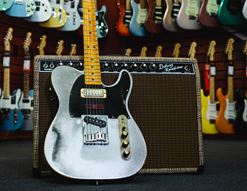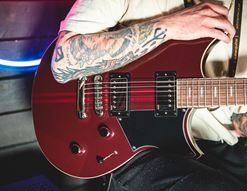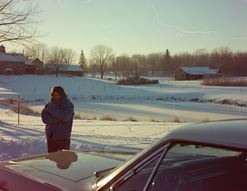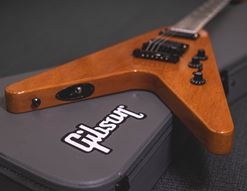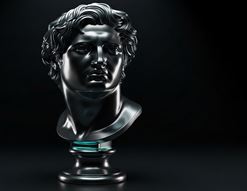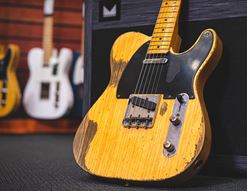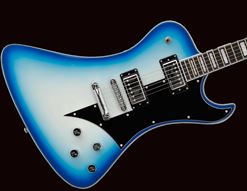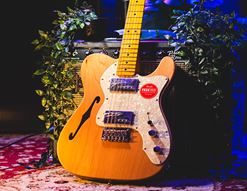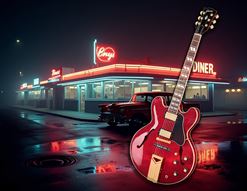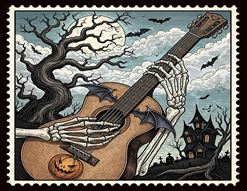Goth music. What is goth music? Apart from ‘music that goths listen to’, which is hardly helpful, there isn’t a particularly clear answer. I’d say it’s music with a dark aesthetic and/or sound (that darkness is open to interpretation, from mildly moody to fully despairing), which has something of an 80s feel (regardless of its release date) that is largely easy to dance to.
Does that work for you?
It’s not a simple thing to define, given that Robert Smith, frontman of the world’s biggest goth band The Cure, doesn’t even reckon he’s ‘goff’:
“The Cure just aren’t a goth band. When people say it to me - ‘you’re goth’ - I say you have either never heard us play or you have no idea what goth is”.
I understand his point (The Cure have a multifaceted sound, to say the least), but there are definitely bands out there who happily fly the goth flag, and today’s blog is a primer to the greatest albums these bands have to offer. As usual, I’ll stick to the ‘one album per band/artist’ rule, and I will keep largely to the 1980s for my choices. There have been plenty of great goth releases since then, without doubt, but that early first period was so potent, that it seems a great shame to rob a genre originator of a space on the list in favour of some later act whom they inspired in the first place.
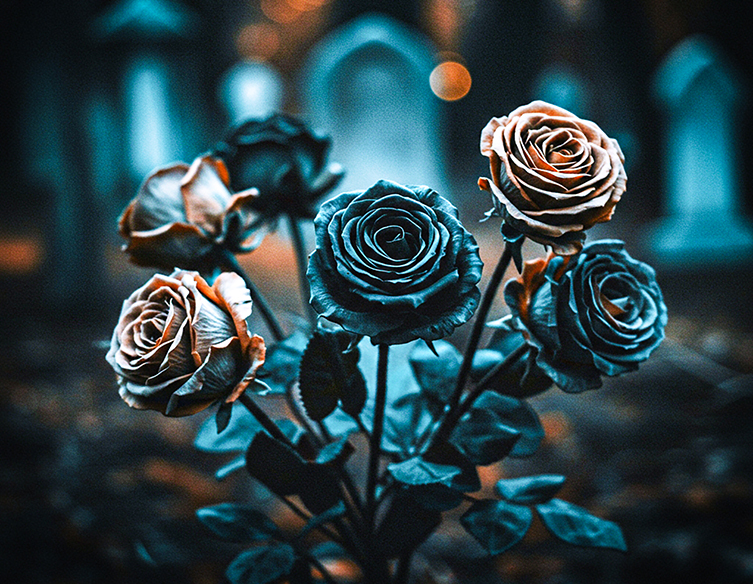
These choices today are mine, and I’m no goth gatekeeper. Music fans can be precious in their choices, and love to show off their scene credentials by referencing obscure underground acts. This is not an article for those people! I’m celebrating the dark side of alternative rock in all its myriad forms, and I’m certainly including the big bands. They deserve it, after all! This list is in chronological order too, so I’m not measuring relative levels of greatness: EVERY album here is a masterpiece!
I hope you enjoy this moonlit journey to the midnight romance that is the Greatest Goth Albums of All Time!
The Greatest Goth Albums Ever at a Glance
Juju - Siouxsie and the Banshees
Only Theatre of Pain - Christian Death
It’ll End in Tears - This Mortal Coil
God’s Own Medicine - The Mission
Within the Realm of a Dying Sun - Dead Can Dance
Dawnrazor - Fields of the Nephilim
Closer - Joy Division
Some musicologists (convincingly) argue that a band like The Doors were goth before goth was a thing. I agree, but The Doors were a lot of things, with ‘proto goths’ being only one of them. They were of a different time, and a different scene.
Joy Division, though? There was no real goth scene before them (the darker edge of punk was certainly a thing by 1979 though), but Joy Division’s austere sound - crystalline and bruised at the same time - ushered in a new aesthetic. Sophomore album Closer is the one where the goth vibe is truly cemented, from the cover art of a sarcophagus, to the desolate, funereal sound of final song Decades. The opener Atrocity Exhibition quoted future-prophet JG Ballard but in a way that you could dance to, whilst the agonising lyric of Isolation was in stark contrast to its almost (almost) jaunty music.
Closer was released two months after singer Ian Curtis’ suicide, and the record accordingly holds that extra emotional power as a result. It’s possible to read into these things a bit, but the elegiac beauty of Closer is impossible to miss.
Joy Division may not have been goths themselves, but they invented the sound and atmosphere that goth took and expanded.
In the Flat Field - Bauhaus
At the time, Bauhaus caught a lot of flack for being posers in the goth world. This strikes me as odd for such a visually-obsessed scene, especially when Bauhaus totally brought it in terms of sound and attitude, but there you go. Perhaps their non-London origin stood against them, but Bauhaus made their creepy mark on the world nonetheless.
In the Flat Field was Bauhaus’ debut album and appeared on 4AD, the cooler-than-cool label that also signed the Cocteau Twins, Dead Can Dance, Clan of Xymox and eventually the Pixies. From the first notes of album opener Double Dare, you can tell that something quite different - and sinister - is afoot. Elliptical drums, scuttling, spidery guitars and possibly the best bass tone in existence all conspire to paint an enticingly disturbing sonic picture. Peter Murphy’s sepulchral voice adds the necessary vampiric tones to seal the deal and single out Bauhaus as one of the most defining acts of the era.
Juju - Siouxsie and the Banshees
Siouxsie and the Banshees have delivered a collective body of work that is as kaleidoscopically colourful as it is significant. It’s a hard thing for me to single out their ‘best’ album, since, like The Cure, there are so many flavours available within their oeuvre. Indeed, Cure frontman Robert Smith was in the Banshees for the band's Hyena album, a close contender for inclusion here.
In the end, I decided to go with popular consensus and select 1981’s Juju album for today’s blog. It seems to be an enduring favourite with fans, and I personally have it in frequent rotation. There’s an energy present on this record that fizzes throughout, thanks to Budgie’s drumming and John McGeoch’s inspired guitar player. Siouxsie herself is as mercurial and commanding as always, and stardust seems to drip off every song in this tight and confident collection of tunes.
Only Theatre of Pain - Christian Death
For hardcore goths, Christian Death are the zero point for the Los Angeles scene. LA has historically always been a strong place for goth-centric music, and this record from March 1982 is a highly influential example.
Christian Death - who are still a band today - were originally led by Rozz Williams, a charismatic and tortured artist who remained the only constant in the lineup until his suicide in 1998. The band’s sound featured the sort of tribal drums, deathly vocals and spiralling guitars that became a goth mainstay. Lyrically, things got pretty dark (as you might expect), with talk of religious blasphemy, necrophilia and drug use.
Christian Death are widely regarded as originators of the Death Rock subgenre, which mixes punk, goth and horror/sci-fi aesthetics. It all started with this album.
It’ll End in Tears - This Mortal Coil
If record label 4AD were the impeccable tastemakers of 80s alternative music, then their goth-and-gossamer ‘supergroup’ collaboration This Mortal Coil were the ultimate expression of that taste. Featuring artists from across the label’s roster (and changing the lineup with each of the 3 albums released under the TMC name), musicians from the Cocteau Twins, Dead Can Dance, Colourbox and Magazine all contributed to different songs.
The whole concept, by label boss Ivo Watts-Russell, was for an album’s worth of cover versions of his favourite songs, performed by his favourite contemporary artists. It’s a sublime, tear-stained and grandiloquent album, filled with sad beauty, generous reverb and perfect taste.
Each song is of course markedly different from the next due to the collaborative nature of the album. Stand outs for me would include opener Kangaroo (a Big Star cover), Song to the Siren (a Tim Buckley cover) and Another Day (a Roy Harper tune), the latter two featuring Elizabeth Fraser’s heavenly vocals. It’s as goth as it gets, but whenever people talk of dreampop, they are referencing a sound that began with this album.
Clan of Xymox - Clan of Xymox
Dutch goth stars Clan of Xymox were an early signing for the 4AD label, and provided a blueprint for Euro goth and darkwave music. Interestingly, there were three main songwriters in the band, of which only vocalist/guitarist Ronny Moorings remains in today’s lineup.
In the early days, Clan of Xymox were a mix of synth, bass and vocals with tape loops providing the drums. After moving from Mijmegen to Amsterdam, the lineup increased and they were offered a support spot on a Dead Can Dance tour. None more appropriate!
Ultimately, the band developed in different directions (Ex-Xymox member Pieter Nooten’s collaboration album with guitarist Michael Brook, Sleeps with the Fishes, is an amazing listen), but this incarnation produced two great albums - their self-titled debut and the follow-up, Medusa.
And just what does ‘Xymox’ even mean? Nothing, apparently! It’s just futuristic sounding and otherworldly, though Moorings did state that he got the word by altering ‘zymotic’, which is related to fermentation and contagious diseases. Now you know!
God’s Own Medicine - The Mission
Chronologically, this Mission album appears before anything by the Sisters of Mercy on today’s list. However, The Mission’s Wayne Hussey was indeed a member of the SoM, and split from their leader Andrew Eldritch to form rival band The Mission, where he performed lead vocals as well as guitar. The influence is obvious.
I suppose it’s that old adage: what’s better than one gloriously moody goth band? Two gloriously moody goth bands! From the opening vocal of Wasteland (“I still Believe in God, but God no longer believes in me”), God’s Own Medicine is like a recipe for top goth tunes. It’s worth it for the delirious shrieks that wail throughout Bridges Burning alone!
Within the Realm of a Dying Sun - Dead Can Dance
Dead Can Dance are without a doubt the most original band on today’s list. Simultaneously as goth as it gets and nothing like goth music, their commitment to utilising dark atmospheres to explore ancient and exotic music is pretty much unparalleled.
The band consisted of two co-vocalists and musicians: Lisa Gerard (whom you’ll know from Gladiator and other movie soundtracks) and Brendan Perry, who met in Australia and brought their unique vision to London in the late 70s.
Listening to Dead Can Dance can take you to some very opulent, imaginary places, from ancient Greek mystery schools (the Dionysus record) to medieval europe (the Aion record) and all places in between. 1987’s Within the Realms of a Dying Sun is a great place to start with the band, as it contains many of their most focused compositions. There’s a darkness here for sure (just check out the front cover, photographed in the Parisian Pere Lachaise necropolis), but it’s mixed with an almost religious level of wonder and enticement too. ‘Unique’ doesn’t even begin to describe some of the moments on this record.
Dawnrazor - Fields of the Nephilim
The front cover of Dawnrazor is great: the band look like wild west versions of the ghostly mariners from John Carpenter’s movie The Fog. It’s a good start, and this debut record from English goths Fields of the Nephilim is as shadowy and sepulchral as the cover image suggests.
Is it okay to say that there’s more than a hint of Sisters of Mercy with these guys? There’s an overt cowboy vibe attached (the record even begins with a sample from Once Upon the Time in the West), but I can’t see these guys existing if it weren’t for Andrew Eldritch & co. Even so, their popularity on the scene and straight-up quality means that this record deserves a place on today’s list.
Also, ghost-like goth cowboys? What’s not to like?
Children of God - Swans
I do not think Swans mainman Michael Gira would hold much truck with me calling their 1987 record Children of God a goth album, but it’s my list and I reckon it is!
Swans are one of those bands that is maybe more of an ethos than a band per se: no matter what styles they tackle - and they’ve tackled a lot - it all comes out sounding inherently Swans-like. There’s a gravity there and an almost palpable mix of horror and ecstasy that are evoked in the music of this most uncompromising of bands.
Children of God - to me at least - is a prime example of American mid-80s goth music. It’s got it all: themes of longing, destitution, ageing and death; sounds that rub shoulders with beauty and chaos, and a pair of vocalists (Gira himself and then-partner Jarboe) who sound like Hell and Heaven, respectively. It’s mesmerising stuff.
Floodland - Sisters of Mercy
The Sisters of Mercy are perhaps the most definitive example of 80s goth as a descriptor: deathly baritone male vocals, incessant drum machine throbs and clashes of chorus-drenched guitar arpeggios picking out the atmosphere in between keyboard and sample stabs. It’s all here!
The Sisters of Mercy brought danceable gloom to a pretty specific point, one since adopted by many other bands of the time (even one or two on this list!), but, as with all things, it comes down to the songs themselves. Floodland, which was created mostly with sequencers and computers (rare for the 1980s), concerned itself with the collapse of civilisation seen through events such as the Chernobyl disaster, which made for a timely, if uneasy, listen.
Chief songwriter Andrew Eldritch certainly had the correct voice to convey such existential angst, and the songwriting nous to make such despair catchy and danceable. If the SoM are something of a goth nucleus, then Floodlands is its nerve centre.
Disintegration - The Cure
Despite what Robert Smith said at the beginning of the article, it’s hard not to put The Cure into a list of top goth records. Of course they belong here! Every goth in the world has at least one Cure record, and it’s very likely to be this 1989 magnum opus, Disintegration.
This is where The Cure went widescreen, with a tear-stained grandeur that both summed up everything that came before and moved beyond those previous parameters. The essence and the attitude of the band remain intact, but there’s size, space and colour to be found in the remarkable album, in a way that just wasn’t before. It’s goth, but it glitters like nothing else.
How Goth is Goth?
What do you think about those choices? There are lots of goth-adjacent acts like Killing Joke, Echo & The Bunnymen and Coil, and they probably deserve a mention, but I felt that there were already more than enough ‘pure’ goth records out there that justified inclusion.
So, what is goth music? Here are some recurring elements that might help as identifiers:
- Danceable tempos
- ‘Tribal’ drums, which is a lazy way of saying ‘syncopated stuff with the toms’
- Prominent basslines
- Vocals that are often lower in pitch (male baritone)
- Guitars are effected, frequently clean and often playing arpeggios
- Synths are aplenty
- Lyrical themes are misanthropic, existential and generally ‘dark’.
Those seem to be the main genre signifiers, though of course bands like Dead Can Dance completely subvert such observations! Maybe it’s more a case of vibe, intention and aesthetic?
You be the judge. What’s clear is that the goth genre has a ton of great albums and songs to check out. From a guitar side of things, there is more invention going on here than you may have considered, especially with players like John McGeoch and Robert Smith. They prove that the guitar can be both supportive and decorative in ways that steer outside the usual places.
Whether you are into the fashion side of things or not, the songs remain great, and are well worth your considered time. Grab your pint of Snakebite and I’ll see you on the dancefloor as soon as I’ve touched up my makeup!

